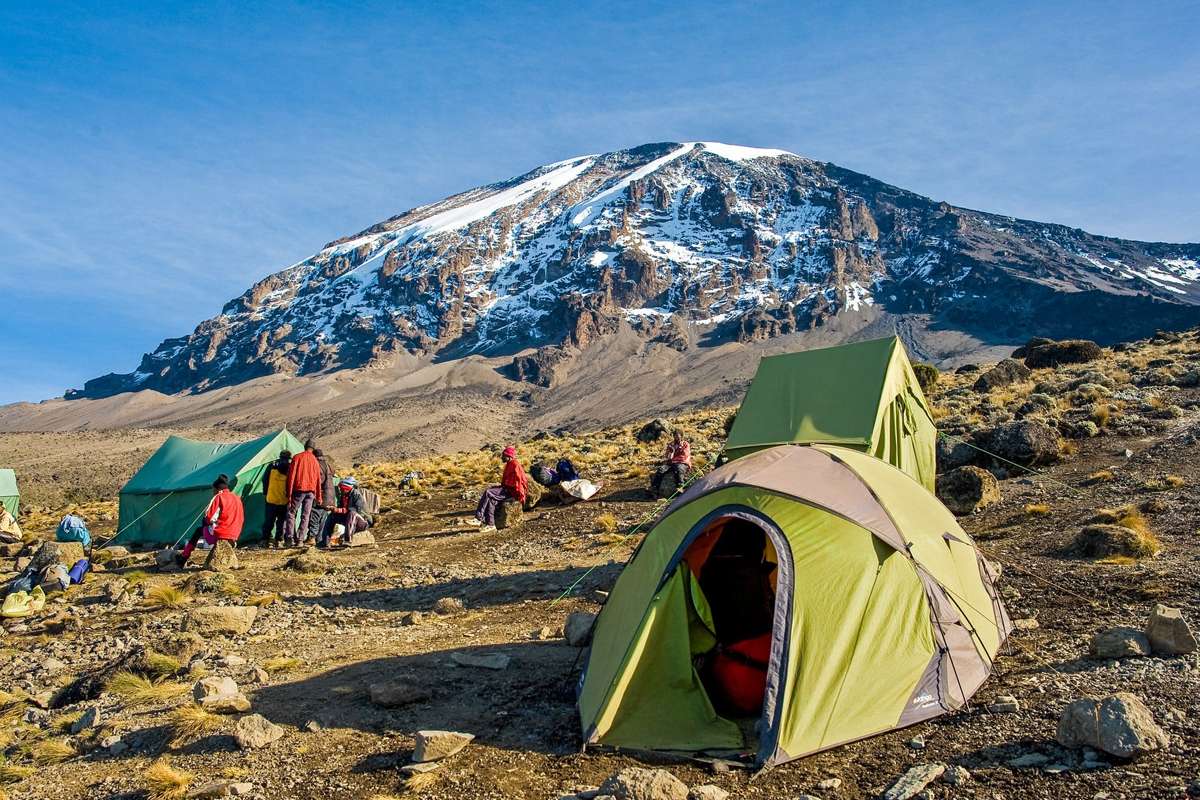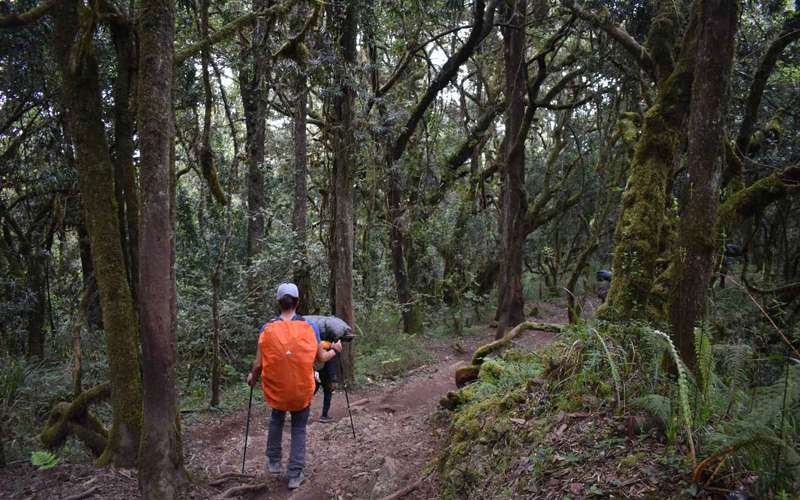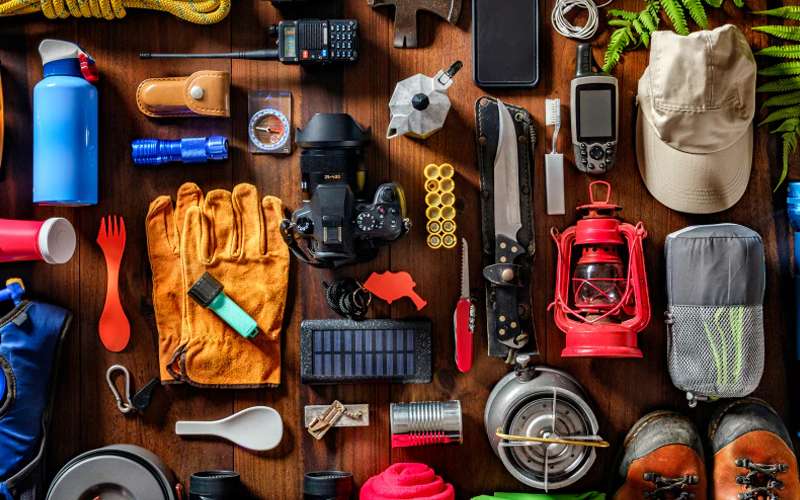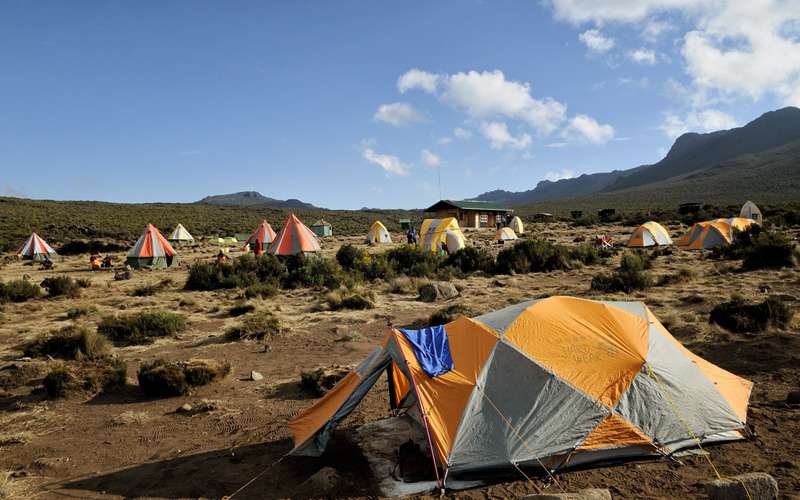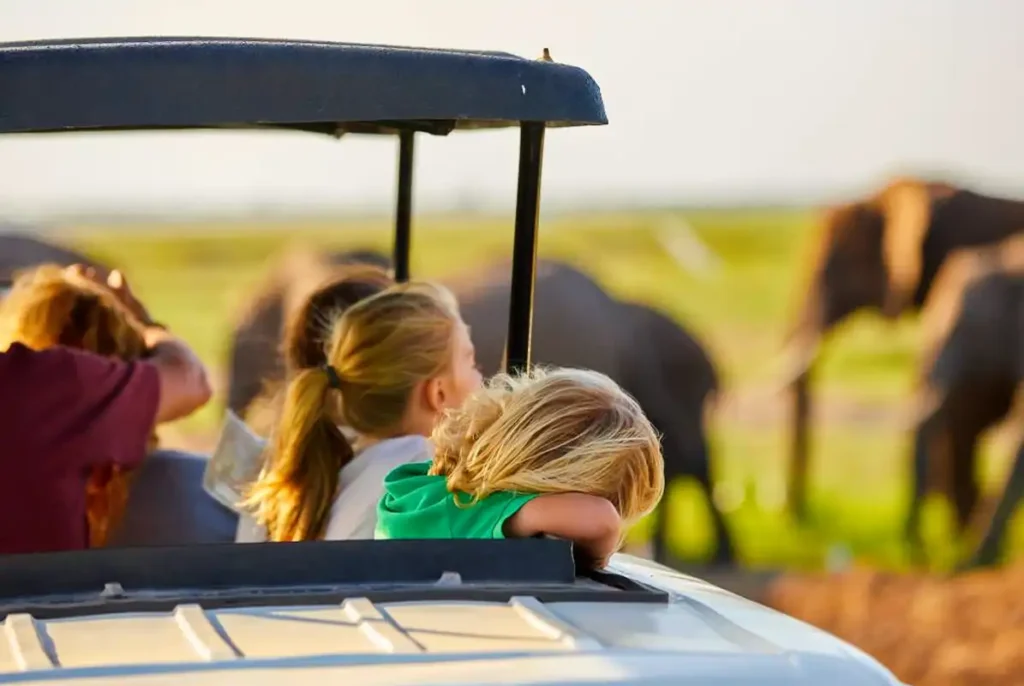Mount Kilimanjaro, Africa’s highest peak, stands at a majestic 5,895 meters (19,341 feet) above sea level. Known as the “Roof of Africa,” this iconic mountain attracts adventurers from around the globe who aspire to reach its snow-capped summit. Among the various routes available for climbing Kilimanjaro, the Machame Route, often referred to as the “Whiskey Route,” is renowned for its stunning scenery and high success rates.
Why Choose the Machame Route?
- Popularity and Success Rate: The Machame Route is one of the most popular routes for climbing Kilimanjaro, favored by both experienced trekkers and beginners. With a high success rate compared to other routes, it provides ample time for acclimatization, which is crucial for reaching the summit successfully. The route is designed to maximize the chances of summit success while offering a challenging yet rewarding climbing experience.
- Scenic Diversity: One of the main draws of the Machame Route is its scenic diversity. Climbers traverse through lush rainforests, heather moorlands, alpine deserts, and eventually, the Arctic summit zone. Each day brings new landscapes and breathtaking views, making the journey as memorable as the destination.
Preparation for the Climb
- Physical Fitness and Training: Climbing Kilimanjaro is a physically demanding endeavor, requiring good cardiovascular endurance, strength, and stamina. It’s essential to undertake a training regimen that includes aerobic exercises like running and cycling, strength training, and hiking with a weighted backpack to simulate the trek’s conditions.
- Necessary Gear and Equipment
Having the right gear is crucial for a successful climb. Key items include:
- Clothing: Layered clothing to adapt to varying temperatures, including base layers, insulating layers, and waterproof outer layers.
- Footwear: Sturdy, well-fitting hiking boots and comfortable trekking socks.
- Accessories: Hats, gloves, sunglasses, and trekking poles.
- Backpack: A daypack for essentials and a larger backpack for porters to carry.
Detailed Itinerary of the Machame Route
- Day-by-Day Breakdown
- Day 1: Machame Gate to Machame Camp
- Elevation: 1,800m to 3,000m
- Terrain: Rainforest
- Distance: 11 km (7 miles)
- Day 2: Machame Camp to Shira Camp
- Elevation: 3,000m to 3,840m
- Terrain: Moorland
- Distance: 5 km (3 miles)
- Day 3: Shira Camp to Lava Tower to Barranco Camp
- Elevation: 3,840m to 4,630m to 3,950m
- Terrain: Semi-desert
- Distance: 10 km (6 miles)
- Day 4: Barranco Camp to Karanga Camp
- Elevation: 3,950m to 4,200m
- Terrain: Alpine Desert
- Distance: 5 km (3 miles)
- Day 5: Karanga Camp to Barafu Camp
- Elevation: 4,200m to 4,670m
- Terrain: Alpine Desert
- Distance: 4 km (2.5 miles)
- Day 6: Barafu Camp to Uhuru Peak to Mweka Camp
- Elevation: 4,670m to 5,895m to 3,090m
- Terrain: Arctic Summit
- Distance: 17 km (11 miles)
- Day 7: Mweka Camp to Mweka Gate
- Elevation: 3,090m to 1,640m
- Terrain: Rainforest
- Distance: 10 km (6 miles)
- Key Highlights and Landmarks
- Machame Gate: The starting point, where climbers register and begin the journey.
- Shira Plateau: Offers expansive views of the mountain and the surrounding landscape.
- Lava Tower: A significant acclimatization point and a dramatic volcanic rock formation.
- Barranco Wall: A steep, yet manageable rock scramble offering spectacular views.
- Uhuru Peak: The summit of Kilimanjaro, marking the trek’s culmination.
Acclimatization and Altitude Sickness
- Importance of Acclimatization: Proper acclimatization is vital for a successful climb. The Machame Route’s “climb high, sleep low” approach allows the body to adjust gradually to the altitude, reducing the risk of altitude sickness.
- Tips for Preventing Altitude Sickness
- Hydration: Drink plenty of water to stay hydrated.
- Pacing: Walk slowly and steadily, maintaining a comfortable pace.
- Diet: Eat light, high-calorie meals to maintain energy levels.
- Medication: Consider taking altitude sickness medication like Diamox, after consulting with a healthcare provider.
Guides and Porters
- Role of Guides and Porters: Guides and porters are integral to the Kilimanjaro climbing experience. Guides provide expertise, support, and encouragement, while porters carry equipment, set up camps, and ensure climbers’ comfort and safety.
- Tipping and Etiquette: Tipping is customary and appreciated. It’s a way to acknowledge the guides’ and porters’ hard work and dedication. It’s recommended to tip at the end of the climb, with amounts varying based on the length of the trek and the size of the group.
Campsites Along the Machame Route
- Description of Each Campsite
- Machame Camp: Nestled in the rainforest, providing a tranquil start to the journey.
- Shira Camp: Located on the Shira Plateau with panoramic views.
- Barranco Camp: Positioned at the base of the Barranco Wall, offering striking scenery.
- Karanga Camp: A key acclimatization site with stunning views of the southern glaciers.
- Barafu Camp: The final staging point before the summit, perched on a rocky outcrop.
- Mweka Camp: The descent camp, set within the lush rainforest.
- Facilities and Amenities: Campsites typically offer basic facilities, including tent accommodations, dining areas, and portable toilets. Some camps may provide additional amenities such as charging stations and small shops.
Wildlife and Flora on the Machame Route
- Unique Species and Vegetation: The Machame Route traverses diverse ecosystems, home to various wildlife and flora. From colobus monkeys in the rainforest to giant lobelias and groundsels in the alpine zones, climbers encounter a range of unique species and vegetation.
- Conservation Efforts: Tanzania’s national park authorities and conservation organizations work tirelessly to protect the natural habitats of Kilimanjaro. Climbers are encouraged to respect wildlife, stay on designated trails, and follow conservation guidelines.
Cultural Experiences
- Interactions with Local Communities: Climbing Kilimanjaro offers opportunities to interact with local Chagga communities, who inhabit the lower slopes of the mountain. Visitors can learn about their traditions, agriculture, and way of life.
- Cultural Significance of Kilimanjaro: Mount Kilimanjaro holds deep cultural significance for the local communities and is considered a sacred site. The mountain’s presence in folklore, traditions, and daily life enriches the climbing experience.
Safety and Challenges
- Common Challenges Climbers Face: Climbers may encounter various challenges, including altitude sickness, fatigue, and harsh weather conditions. Mental and physical resilience is crucial for overcoming these obstacles.
- Safety Precautions and Emergency Procedures: Safety measures include following the guides’ instructions, staying hydrated, and pacing oneself. Emergency procedures are in place for severe altitude sickness or injuries, with guides trained in first aid and rescue operations.
Best Time to Trek
- Seasonal Weather Conditions: Kilimanjaro’s weather varies by season. The dry seasons (June to October and December to February) offer the best climbing conditions, with clear skies and lower precipitation.
- Recommended Months for Climbing: The best months for climbing the Machame Route are January, February, and September, offering favorable weather and fewer crowds. However, each season has its unique appeal, and climbers can choose based on personal preferences.
Sustainable Trekking Practices
- Leave No Trace Principles: Climbers are encouraged to follow the Leave No Trace principles, which include packing out all trash, minimizing campfire impact, and respecting wildlife. Sustainable trekking ensures the preservation of Kilimanjaro’s pristine environment for future generations.
- Supporting Local Economies: By choosing local guides and porters, purchasing locally made goods, and staying in community-run lodges, climbers can support the local economy and contribute to sustainable tourism practices.
The Machame Route offers an unparalleled trekking experience on Kilimanjaro, combining breathtaking scenery, diverse ecosystems, and cultural richness. By preparing adequately, respecting the environment, and embracing the journey, climbers can achieve the ultimate goal of reaching Uhuru Peak while contributing to the preservation of this natural wonder.
FAQs
How long does it take to climb the Machame Route?
The Machame Route typically takes 7 days to complete, including time for acclimatization and summit attempts.
What is the success rate for climbers on the Machame Route?
The Machame Route boasts a success rate of approximately 85%, higher than many other routes due to its acclimatization-friendly itinerary.
How difficult is the Machame Route compared to other routes?
The Machame Route is considered moderately difficult, with a mix of challenging terrain and gradual acclimatization, making it suitable for climbers with good physical fitness.
What should I pack for the Machame Route trek?
Essential items include layered clothing, sturdy hiking boots, a good-quality sleeping bag, trekking poles, and sufficient water and snacks. A comprehensive packing list can help ensure you’re well-prepared.
Can beginners successfully climb Kilimanjaro via the Machame Route?
Yes, with proper preparation, training, and a positive mindset, beginners can successfully climb Kilimanjaro via the Machame Route. Engaging experienced guides and following acclimatization protocols is key to a successful ascent.
For a comprehensive exploration of Tanzania’s diverse offerings, explore the following options on our page:
– Tanzania Family Safari
– Tanzania Honeymoon Safari
– Tanzania Safari
– Tanzania Walking Safari
– Zanzibar Vacation
Discover detailed information and tips to customize your adventure according to your preferences and needs.


